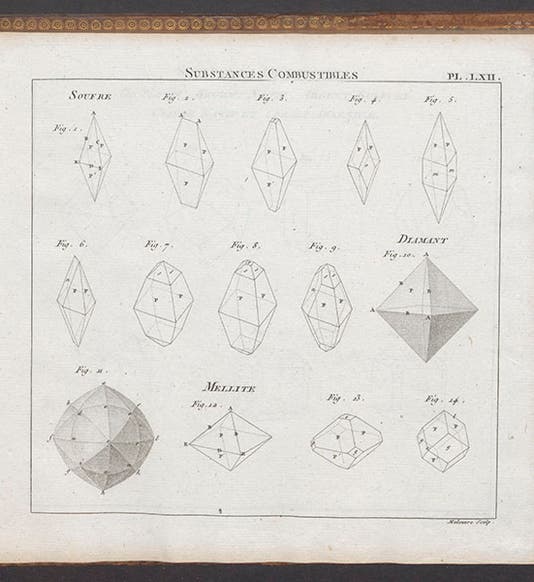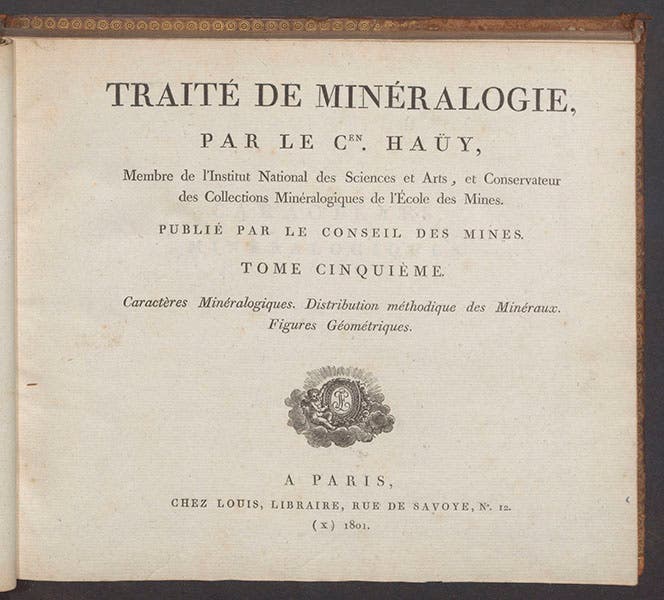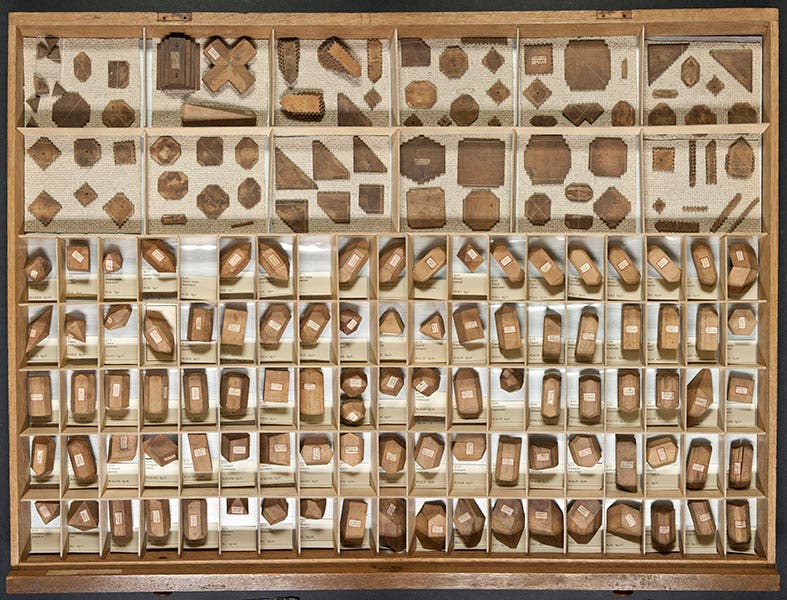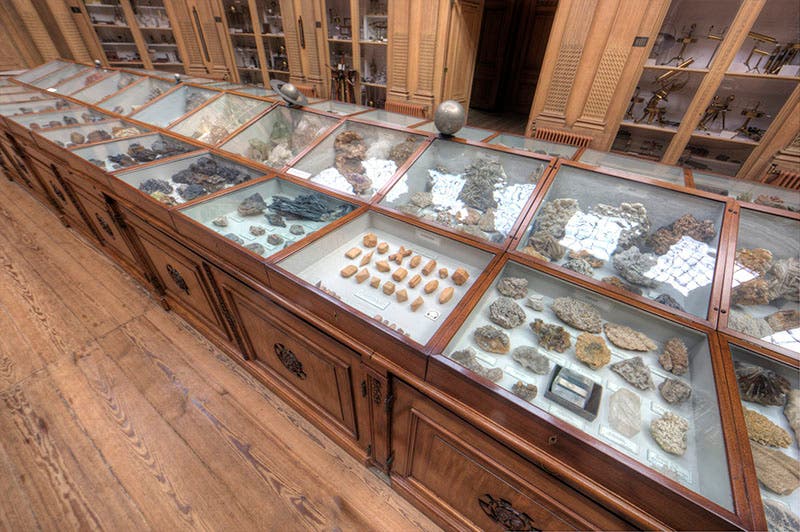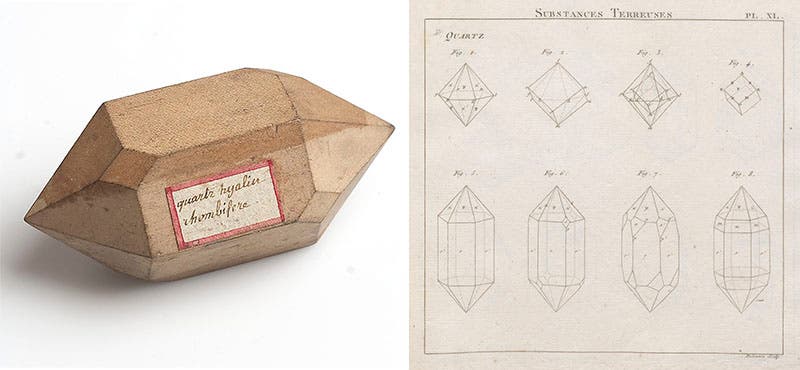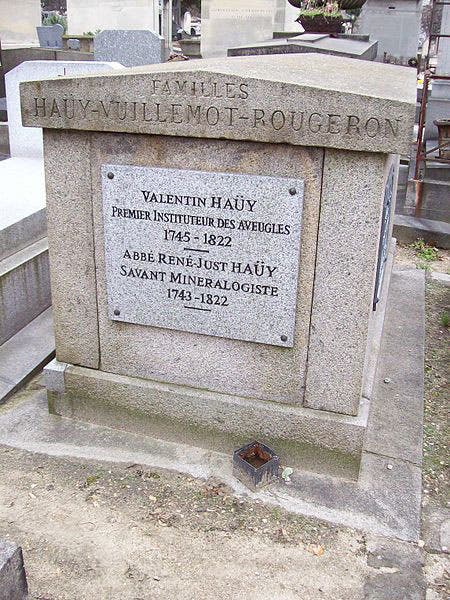Scientist of the Day - René Just Haüy
René Just Haüy, a French mineralogist, was born Feb. 28, 1743. Haüy is often called the father of crystallography, because of his four-volume publication, Traité de Mineralogie (1801). Haüy found that every mineral has, at its core, a unique crystalline structure that can be used to identify and classify that mineral. His Traité had a fifth volume, an atlas, that contained almost 600 diagrams of the various crystal structures that Haüy had identified. Our first image is a sample page that shows, among others, a diamond crystal.
Apparently a fan of graphical education, Haüy commissioned a set of pearwood models from a woodworking family, 597 models in all, showing in three-dimensional form each of the crystals in the book, and Haüy made them available for purchase. A set was bought by Martinus van Marum for Teylers Museum in Haarlem. Van Marum apparently used them to reclassify the minerals in the Museum, and then put some of the models on display, storing the rest away in five large drawers.
We see above a view of the display cases in the Oval Room of the Museum, with 20 models visible at the center, as well as an image of one of the drawers where the models are stored While the existence of the Haüy models is well-known, we have never seen any attempt to match up the models with the corresponding diagrams in the Traité. So we give it a go here. We found two hi-res images posted by Teylers Museum of two of their models, titanite, and quartz. We were able to locate in the book, we think, the minerals that these models represent, and we post them side by side with the models (see images below). In the sixth image, titanite is fig. 225 at bottom right; in the eighth image, quartz is fig. 6, bottom row, second figure from left.
Haüy was not the handsomest of men, as his portraits show. But the bas-relief bust in the Jardin des plantes in Paris is forceful and striking (ninth image).
Haüy's younger brother, Valentin, was an important figure in his own right, founding the first school for the blind in Paris. Valentine and René are buried together in Père Lachaise cemetery in Paris (last image)
Dr. William B. Ashworth, Jr., Consultant for the History of Science, Linda Hall Library and Associate Professor emeritus, Department of History, University of Missouri-Kansas City. Comments or corrections are welcome; please direct to ashworthw@umkc.edu.

